
|
|
|
|
|
|
Classic Bikes
Custom Bikes
Individual
Racing Bikes AJP
AJS
Aprilia
Ariel
Avinton / Wakan
Bajaj
Benelli
Beta
Bimota
BMW
Brough Superior
BRP Cam-Am
BSA
Buell / EBR
Bultaco
Cagiva
Campagna
CCM
CF Moto
Combat Motors
Derbi
Deus
Ducati
Excelsior
GASGAS
Ghezzi Brian
Gilera
GIMA
Harley Davidson
Hero
Highland
Honda
Horex
Husaberg
Husqvarna
Hyosung
Indian
Jawa
Kawasaki
KTM
KYMCO
Laverda
Lazareth
Magni
Maico
Mash
Matchless
Mondial
Moto Guzzi
Moto Morini
MV Agusta
MZ / MuZ
NCR
Norton
NSU
Paton
Peugeot
Piaggio
Revival Cycles
Roland Sands
Royal Enfield
Sachs
Sherco
Sunbeam
Suzuki
SWM
SYM
Triumph
TVS
Ural
Velocette
Vespa
Victory
Vincent
VOR
Voxan
Vyrus
Walt Siegl
Walz
Wrenchmonkees
Wunderlich
XTR / Radical
Yamaha
Zero
Video
Technical
Complete Manufacturer List
|
Bimota Tesi H2 Prototype |
| . |
Kawasaki has taken a 49.9 percent stake in Bimota, with the controlling 50.1% being retained by its current owners (formerly Bimota S.A. but officially renamed B and Motion S.A.), and is resurrecting it with a monster motorcycle. The Tesi H2 adds Bimota's famous center-hub steering and chassis to the wild Kawasaki H2 supercharged motor.
The deal has been in progress for nearly three years, and the bike has just been unveiled at the 2019 EICMA show in Milan. Kawasaki Heavy Industries' Motorcycle Planning Division Manager Hiroshi Ito spoke at the launch:
"A small investment bank approached us inquiring if we were interested in an Italian motorcycle manufacturer. The company name was veiled, but when I checked the documents I instantly noticed. Oh it’s BIMOTA!!!. Yes, that BIMOTA. For motorcycle enthusiast at my age, BIMOTA was legendary motorcycles that we used to dream of with its incredible chassis, jewel-like parts and an unaffordable price tag."
Thus, Kawasaki decided to invest, leaving Bimota based in Italy but providing it with engines and support.
"BIMOTA is a jewel of Italy," continued Ito. "So It must be based in Rimini, Italy. It must be designed by Italian designers. And it must be built by Italian craftsmen otherwise it will lose it value. So, our mission is clear, we will support Sig. Marconi and his team will make new legendary history of BIMOTA with Kawasaki’s legendary engines! We’d like declare now BIMOTA is here as most premium motorcycle in the world."
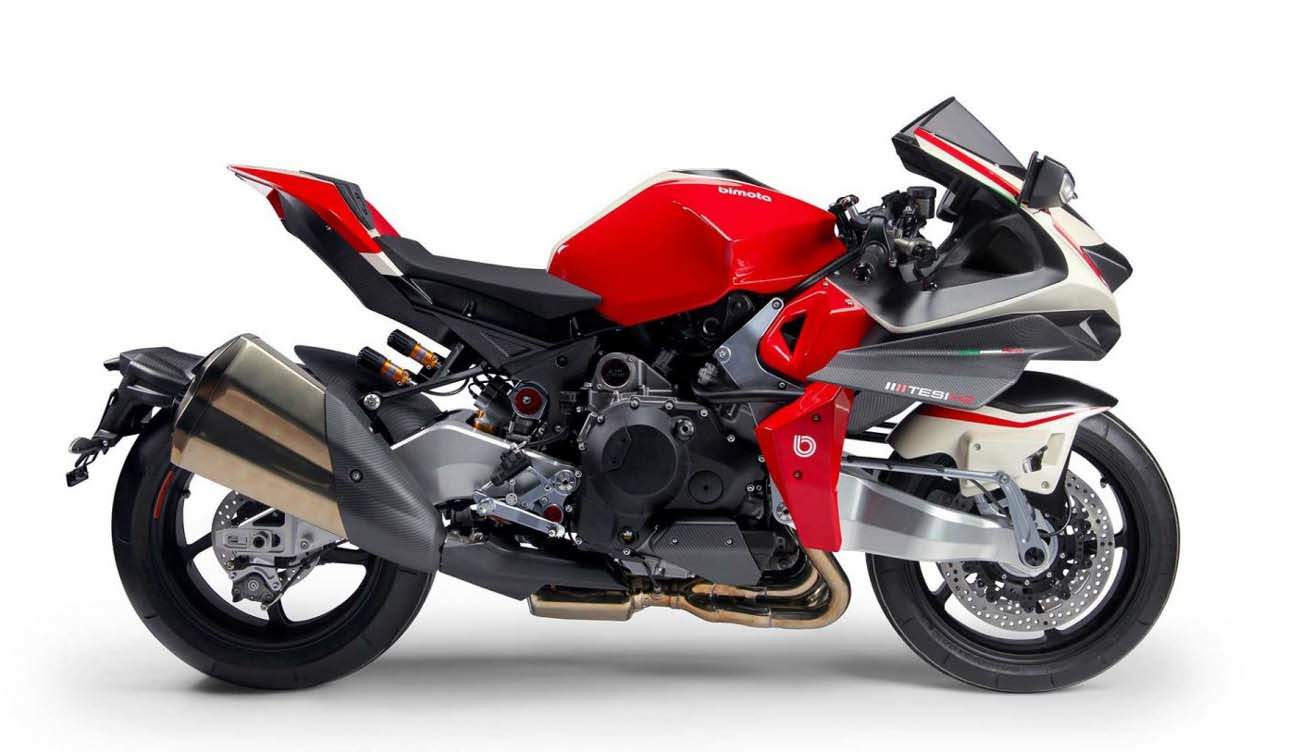
To mark their new partnership, engineer Pierluigi Marconi designed a new Bimota Tesi model equipped with the Kawasaki H2 supercharged inline-Four engine. The Tesi H2 uses bodywork and a chassis designed by Bimota, including the front swingarm and hub-steering system. On close inspection, it looks like the only parts retained from the H2 are the engine, mirrors, handlebars, steering damper, switchgear, exhaust and instrumentation. Marconi says the Tesi H2 offers electronic suspension, traction control ABS and other electronic systems, likely inherited from the H2. .
Bimota’s front end design separates steering and suspension. Two Öhlins shocks are mounted to the back of the frame, with one connected to a linkage system that runs along the left side to the front swingarm. The front brake caliper is hidden under the fender.
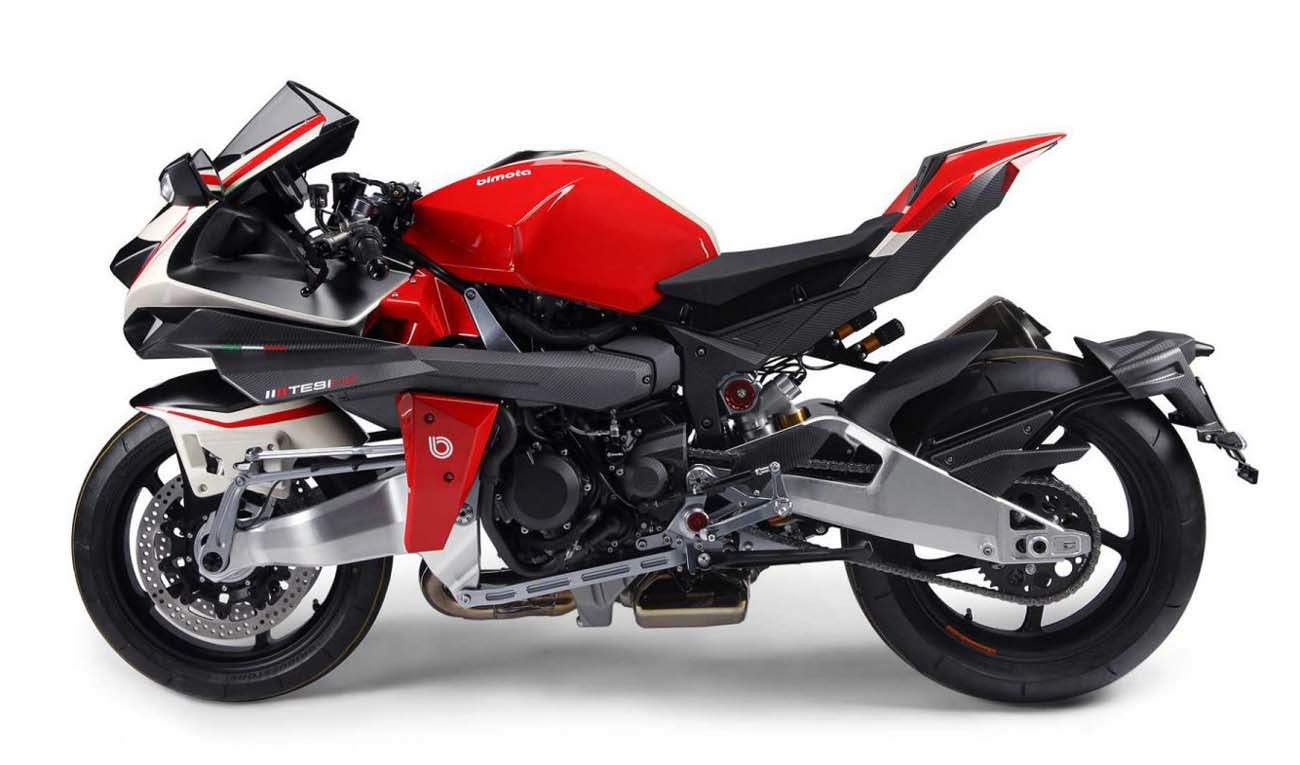
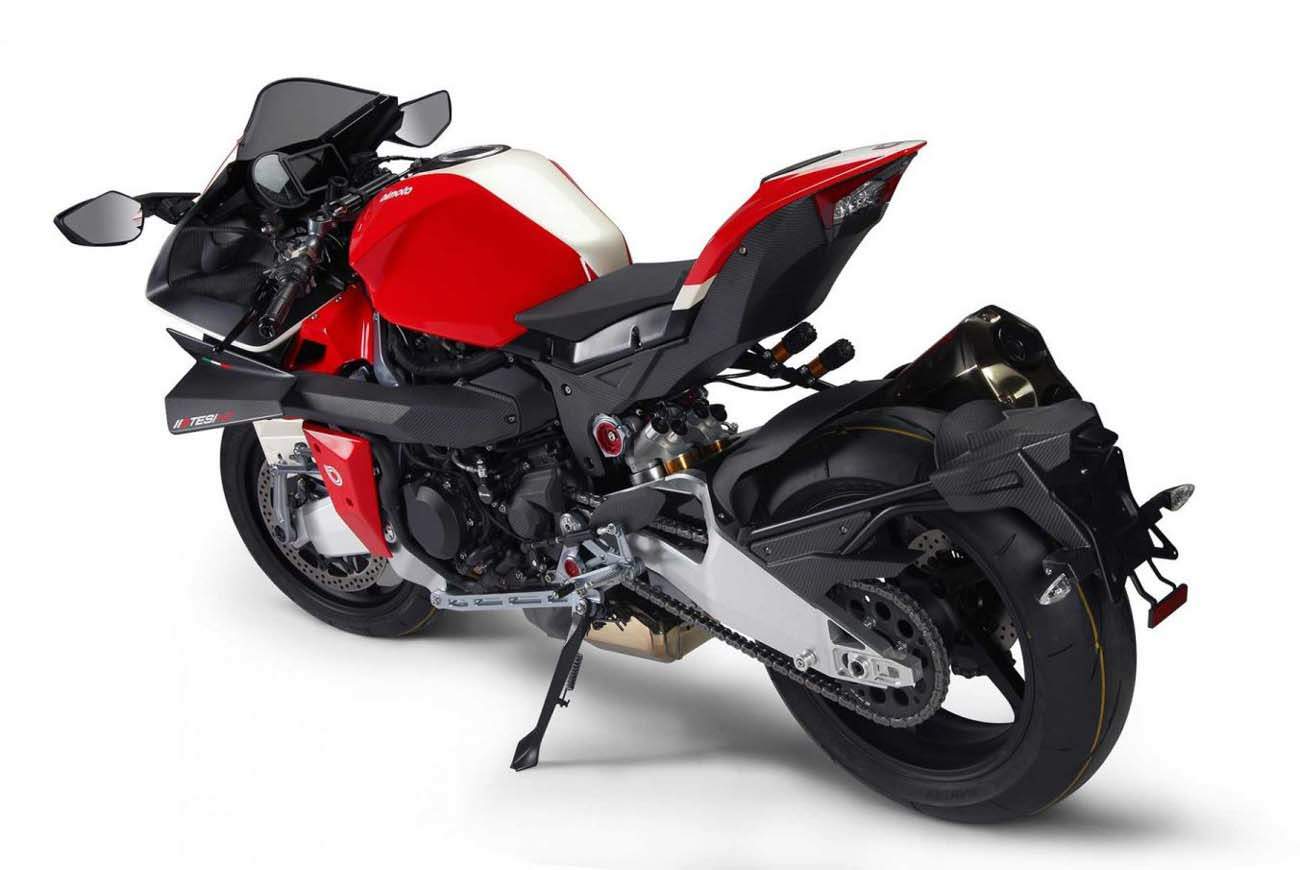
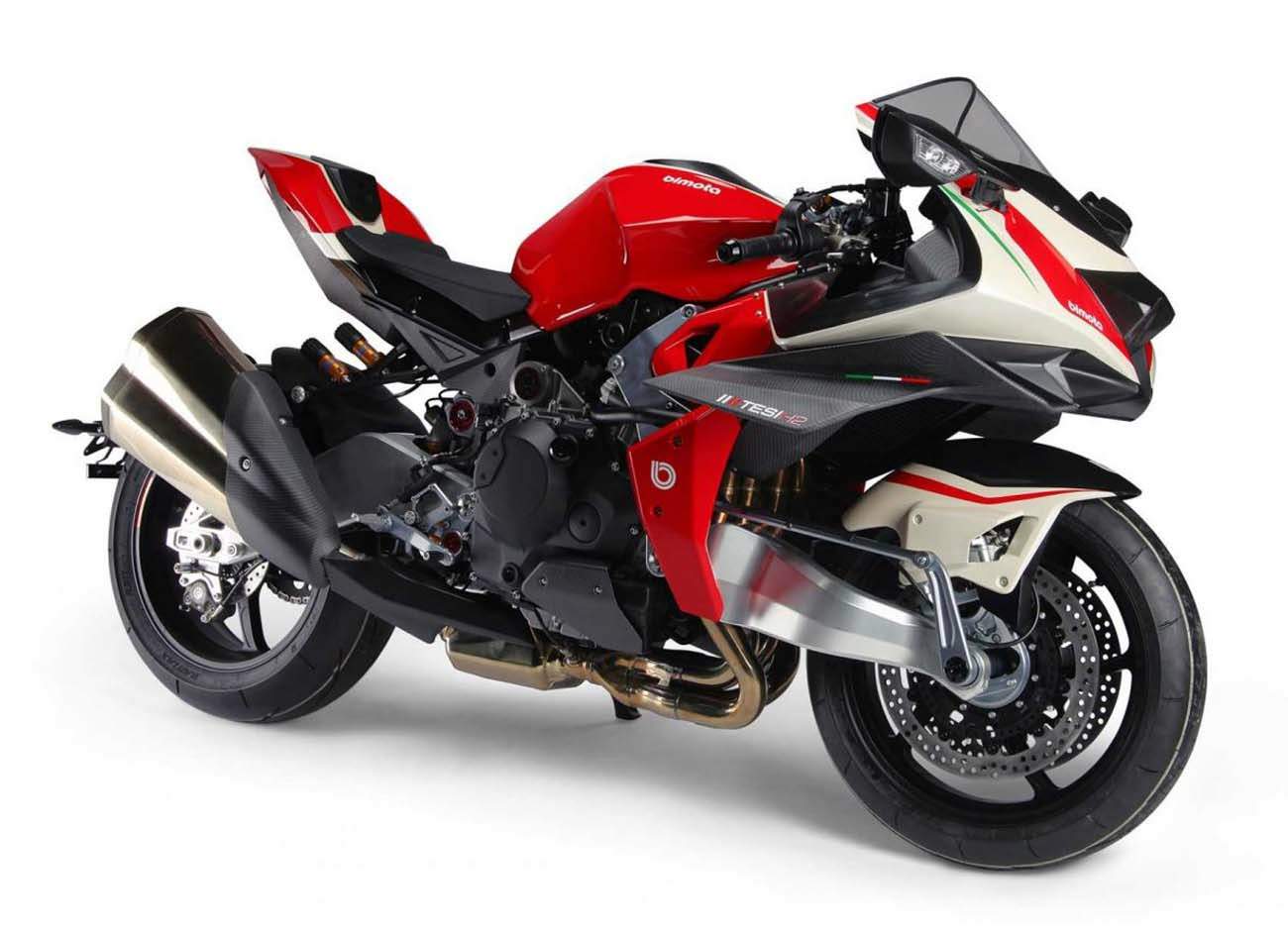
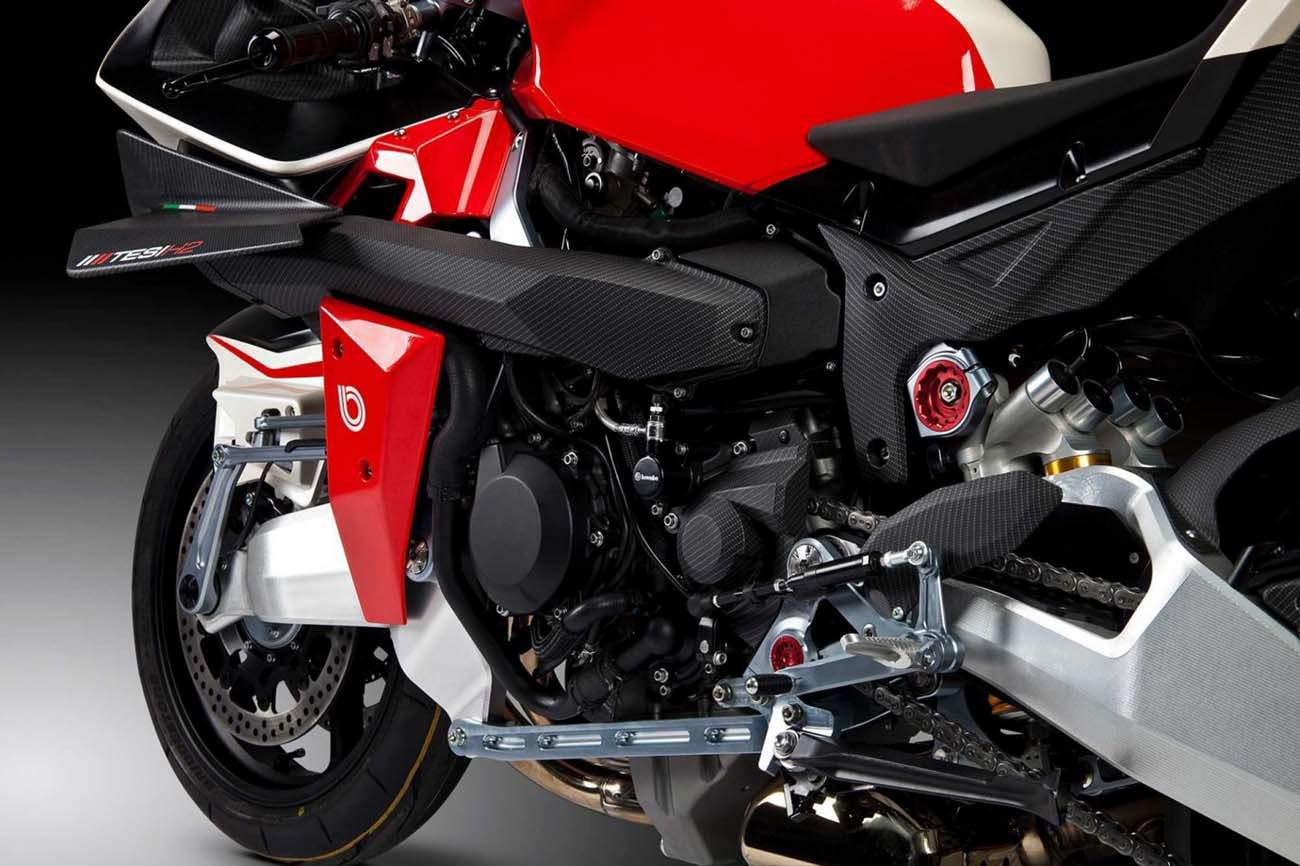

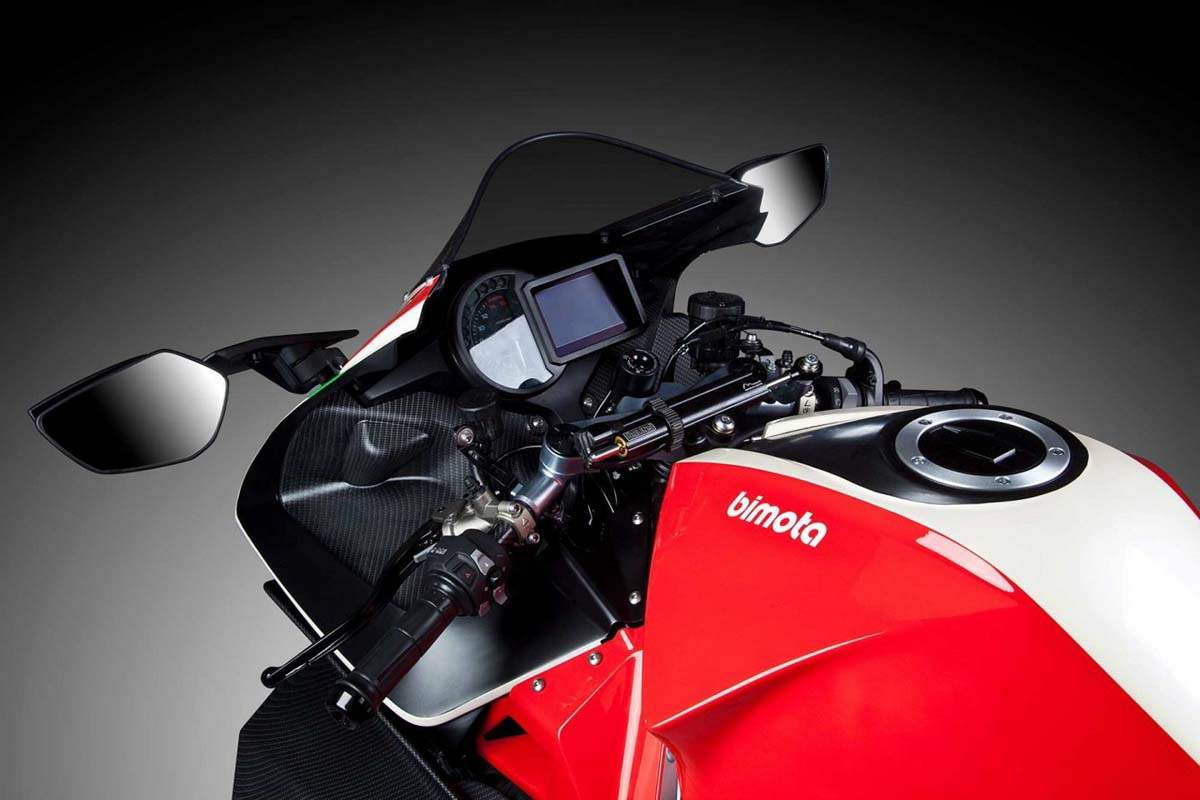
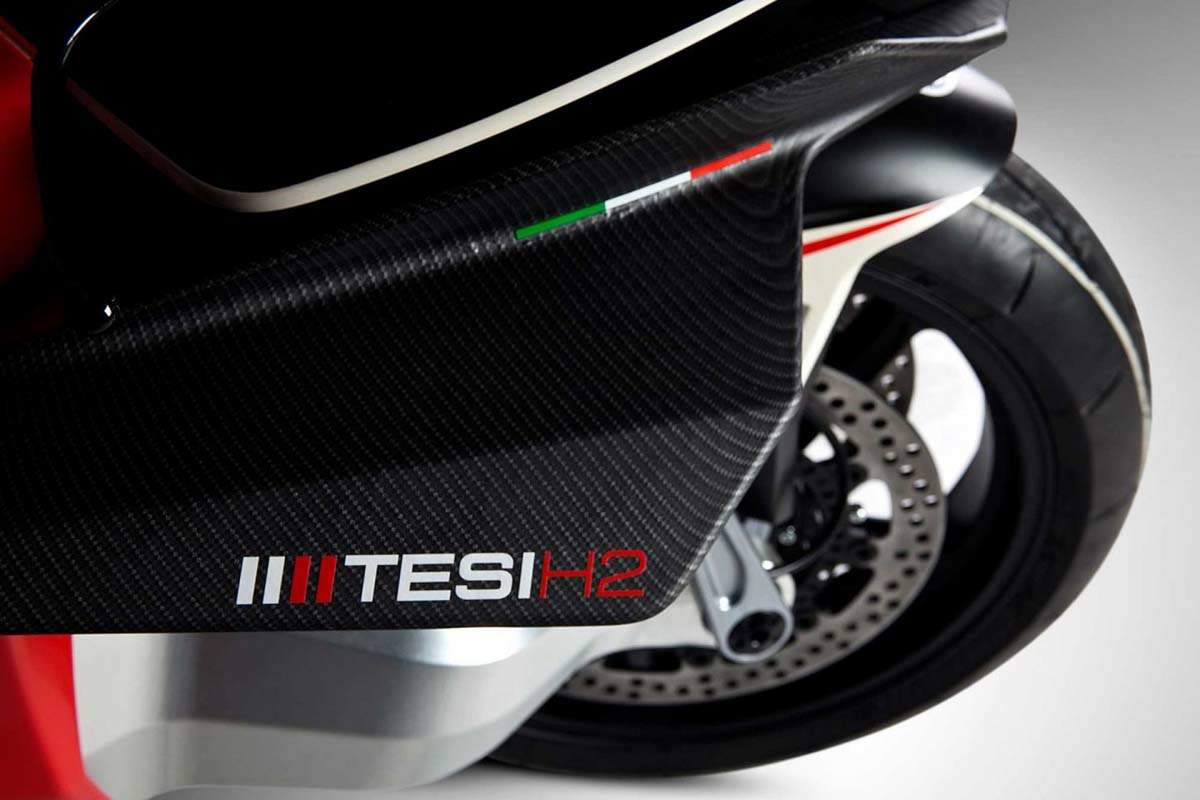
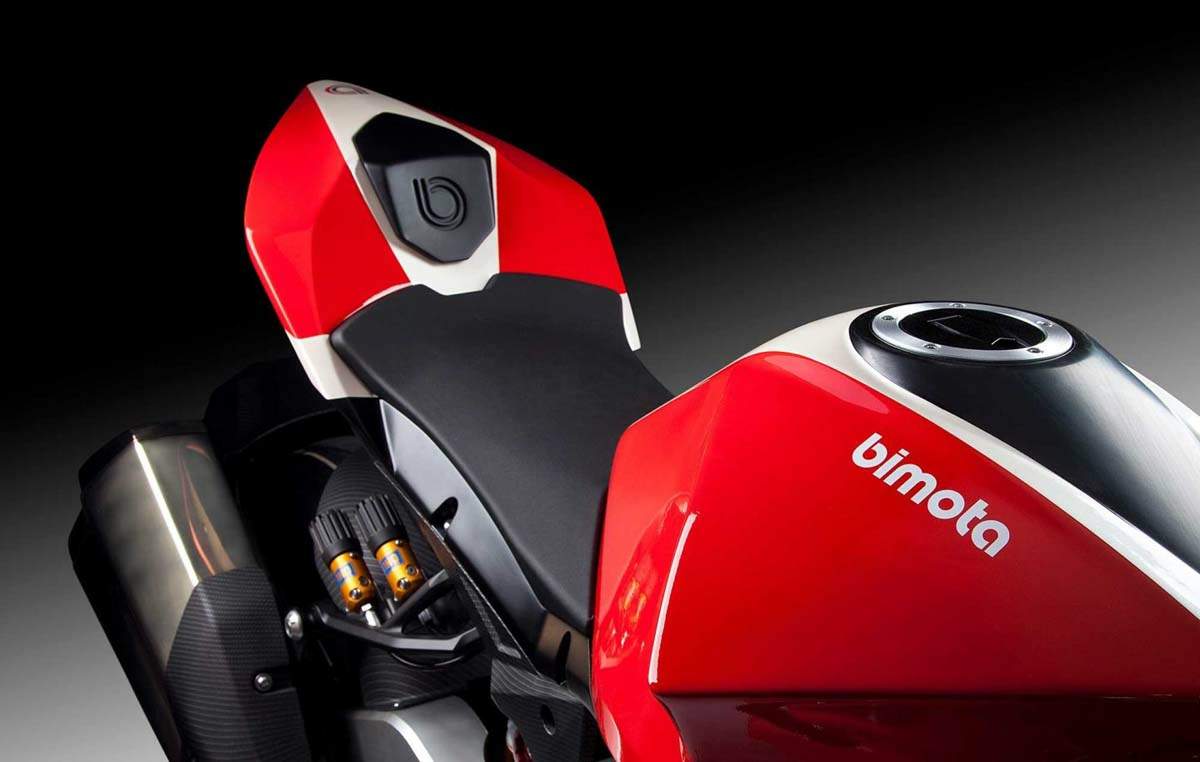
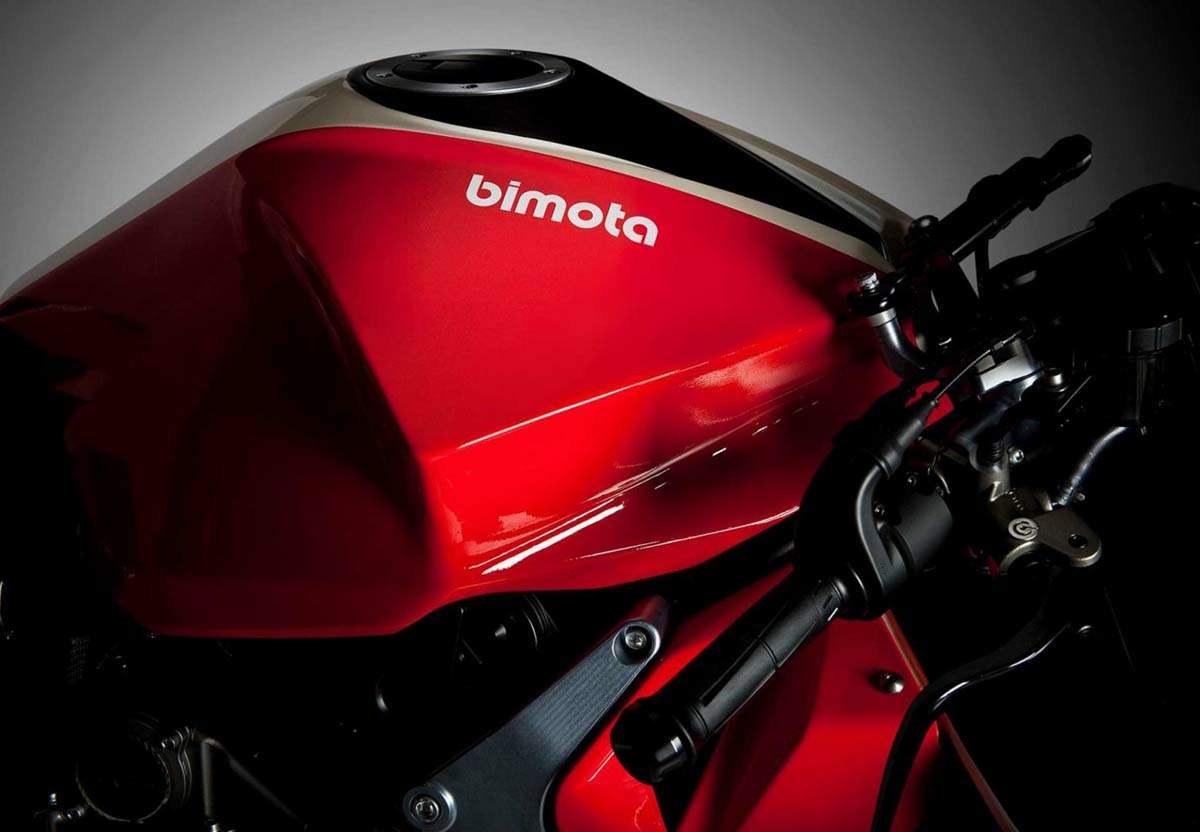
|
Any corrections or more information on these motorcycles will be kindly appreciated. |